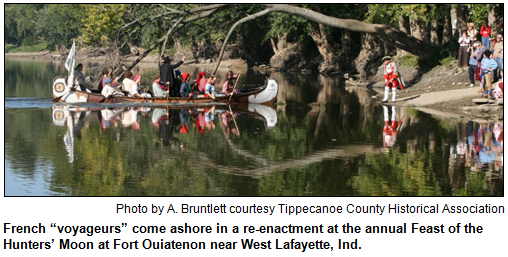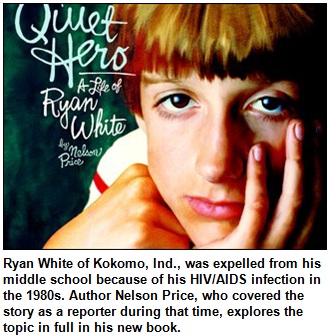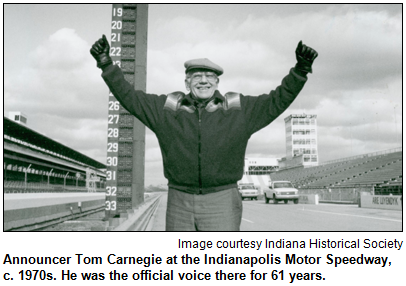Saturdays, noon to 1 p.m. ET on WICR 88.7 FM.
Or listen live from anywhere on WICR
Online!
March 28 show - encore presentation
Interurbans: Their rise and fall across Indiana
With mass transit proposals continually in the headlines, consider this:
Interurbans were intercity electric railways popular 100 years ago - and, believe it or not, the Hoosier state had one of the most extensive systems in the entire country. 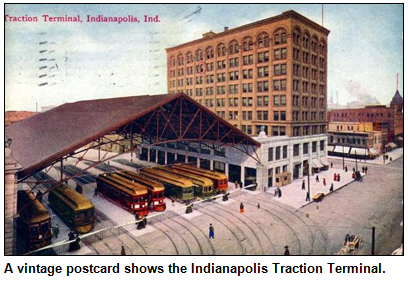 It's the focus of this encore broadcast of one of the most popular shows in our Hoosier History Live archives; the original air date was Sept. 28, 2013.
It's the focus of this encore broadcast of one of the most popular shows in our Hoosier History Live archives; the original air date was Sept. 28, 2013.
Interurban lines connected small towns with most of Indiana's big cities, and the cities with each other. Lines radiated from Indianapolis to Fort Wayne, Louisville, Lafayette, Peru, Terre Haute and Richmond (and six other routes). These interurbans then connected with others, reaching Chicago, Toledo, Columbus and even farther. A separate hub centered on Evansville.
To explore the rise and fall of the interurban system, Nelson is joined in studio by two experts:
- Nathan Bilger, the planning director for the town of Whiteland in Johnson County. Nathan grew up in Columbia City, lives in Greenfield and has extensively researched interurban and railroad lines throughout Indiana. He maintains a website about Indiana railroading.
- Craig Berndt of Fort Wayne, the author of The Toledo and Chicago Railway Company (2007), a book about one of the interurban lines that served travelers in northeastern Indiana, including residents of towns in his home turf of DeKalb County.
The first interurban line in Indiana opened in 1898, from Anderson to Alexandria. The first interurban to Indy opened on New Year's Day in 1900 and brought passengers from Franklin and Greenwood to the Hoosier capital.
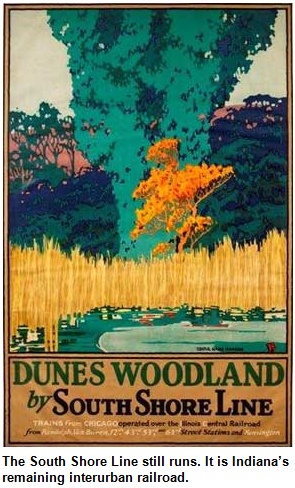 Today, the only remaining passenger interurban in the state - and one of the few left in the country - is the popular South Shore line that links South Bend with Chicago.
Today, the only remaining passenger interurban in the state - and one of the few left in the country - is the popular South Shore line that links South Bend with Chicago.
The bygone Traction Terminal in downtown Indianapolis, which opened in 1904, was easily the nation's largest interurban station. A nine-story building with a train shed, the Traction Terminal was demolished in 1972. The final interurban departed from Indianapolis in September 1941, bound for Seymour.
According to Electric Railroads of Indiana (Hoosier Heritage Press, 1980) by Jerry Marlette, a total of 111 interurban companies had operated more than 3,000 cars in the Hoosier state during the interurban era. Only Ohio had more miles of interurban lines than Indiana's 2,100 miles under wire.
Of Indiana's 92 counties, 68 were served by at least one interurban line. In addition to the massive Traction Terminal in downtown Indy, Muncie was known for its impressive interurban station.
Vestiges of the interurbans do still remain. In southern Marion County, the contemporary names of some streets - Stop 11 Road, for example - date to their heritage as stops on an interurban line.
"Learn more" videos; click to watch and listen:
Roadtrip: Feast of the Hunters' Moon
|
Guest Roadtripper Joan Hostetler of Heritage Photo Services reports on the annual Feast of the Hunters' Moon, which takes place Oct. 3-4 at Historic Fort Ouiatenon Park near West Lafayette, Ind. The annual festival is a re-creation of the annual fall gathering of the French fur traders and Native Americans that took place at the fort in the mid 1700s. Joan says it's a great place to experience the sounds, smells and sights of this era.
Period re-enactors from Indiana and elsewhere participate in this event, attended by thousands, which includes everything from battle re-enactments to musical performances to dozens of booths with goods that are similar to items available during this historic period.
Your Hoosier History Live! team,
Nelson Price, host and
creative director
Molly Head, producer, (317)
927-9101
Richard Sullivan, webmaster
and tech director
Pam Fraizer, graphic
designer
Garry Chilluffo, media+development director
Please tell our sponsors that you appreciate their support: Indiana Authors Award | Indiana Historical Society | Lucas Oil | Santorini Greek Kitchen | Society of Indiana Pioneers | Story Inn

 Acknowledgments to Monomedia, Visit Indy, WICR-FM, Fraizer Designs, Heritage Photo & Research Services, Derrick Lowhorn and many other individuals and organizations. We are an independently produced program and are self-supporting through organizational sponsorships and individual contributions. We do not receive any government funding. Visit our website to learn how you can support us financially. Also, see our Twitter feed and our Facebook page for regular updates.
Acknowledgments to Monomedia, Visit Indy, WICR-FM, Fraizer Designs, Heritage Photo & Research Services, Derrick Lowhorn and many other individuals and organizations. We are an independently produced program and are self-supporting through organizational sponsorships and individual contributions. We do not receive any government funding. Visit our website to learn how you can support us financially. Also, see our Twitter feed and our Facebook page for regular updates.
April 1 panel discussion
Host Nelson Price is here, there and everywhere this week
|
With the upcoming launch of Nelson Price's Quiet Hero, A Life of Ryan White, author Nelson Price, the host of Hoosier History Live, will be interviewed by WFYI's All Things Considered host Jill Ditmire on Monday, March 30, at 5:50 p.m., over the air at 90.1 FM or at WFYI Online.
The book launch is set for Wednesday, April 1, beginning at 6 p.m. at the Indiana Historical Society. The reception is open to the public but requires an RSVP to Kimberly Rohl at krohl@indianahistory.org.
If you don't make it to the book launch, you also can see Nelson with Ryan's mother, Jeanne White-Ginder, on Thursday, April 2, at a book signing at Bookmamas in the historic Irvington neighborhood of Indianapolis. Nelson and Jeanne will sign copies at bookstore at 9 S. Johnson Ave. from 5:30 to 7:30 pm. No RSVP is needed for the Bookmamas event, which is open to the public.
April 4 show
Donald Davidson on Clark, Carnegie and more
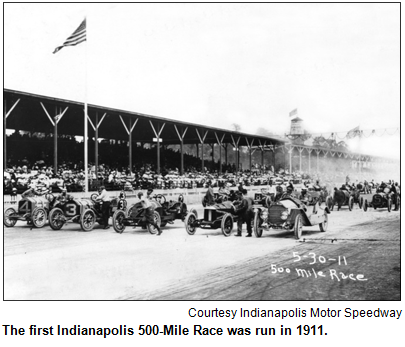 Fifty years ago, the Indianapolis 500 was won by one of the most popular drivers in history.
Fifty years ago, the Indianapolis 500 was won by one of the most popular drivers in history.
In fact, legendary broadcaster Tom Carnegie once confided to our host Nelson that Scotland native Jimmy Clark, who was killed during a race three years after his triumph in 1965 at the Indianapolis Motor Speedway, was one of his two favorite drivers.
To share insights about Clark, Carnegie and other aspects of the Speedway's colorful history, a "walking encyclopedia" will be our guest. Speedway historian Donald Davidson will join Nelson in studio.
A native of England who became obsessed with the Speedway as a boy overseas, Donald showed up at the race track in 1964 and instantly wowed Hoosiers with the depth of his 500 Mile Race trivia. In addition to Donald's arrival in 1964, Jimmy Clark (who had captured Rookie of the Year honors the previous year) was the leader at one point during the 500, although the race ultimately was won by A.J. Foyt.
Also during the 1964 race, another popular driver, Eddie Sachs, was killed during a horrific seven-car accident. Sachs, by the way, was the other driver whom Tom Carnegie identified to Nelson as his all-time favorite.
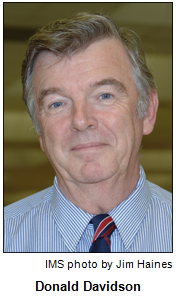 "He was a showman, just like me," Carnegie (referring to Sachs) told Nelson, whose profile of the "Voice of the 500" is the cover story of the current issue of Traces of Indiana and Midwestern History, the magazine published by the Indiana Historical Society.
"He was a showman, just like me," Carnegie (referring to Sachs) told Nelson, whose profile of the "Voice of the 500" is the cover story of the current issue of Traces of Indiana and Midwestern History, the magazine published by the Indiana Historical Society.
Our guest Donald Davidson is quoted throughout the article about Carnegie, who died in February 2011. Beginning with his first gig as the track announcer for the Indy 500 in 1946, Carnegie, Nelson writes, "went on to announce an astonishing 61 Indianapolis 500s, 12 Brickyard 400 races and six U.S. Grand prix competitions, achieving a broadcasting version of a track record that probably will never be equaled."
Donald Davidson is equally treasured as a Speedway institution. He was a Hoosier History Live guest in March 2011 for a show about the 100th anniversary of the Indianapolis 500, which made its debut in 1911.
Any show with this Speedway historian extraordinaire is an ideal opportunity for listeners to call and ask their most burning questions about racing history and folklore at (317) 788-3314.
Learn more:
- Hoosier History Live, March 2011 interview with Donald Davidson.
- Indianapolis Motor Speedway, "In Memory of Tom Carnegie".
|
© 2015 Hoosier History Live! All rights reserved.
Hoosier History Live!
P.O. Box 44393
Indianapolis, IN 46244
(317) 927-9101

